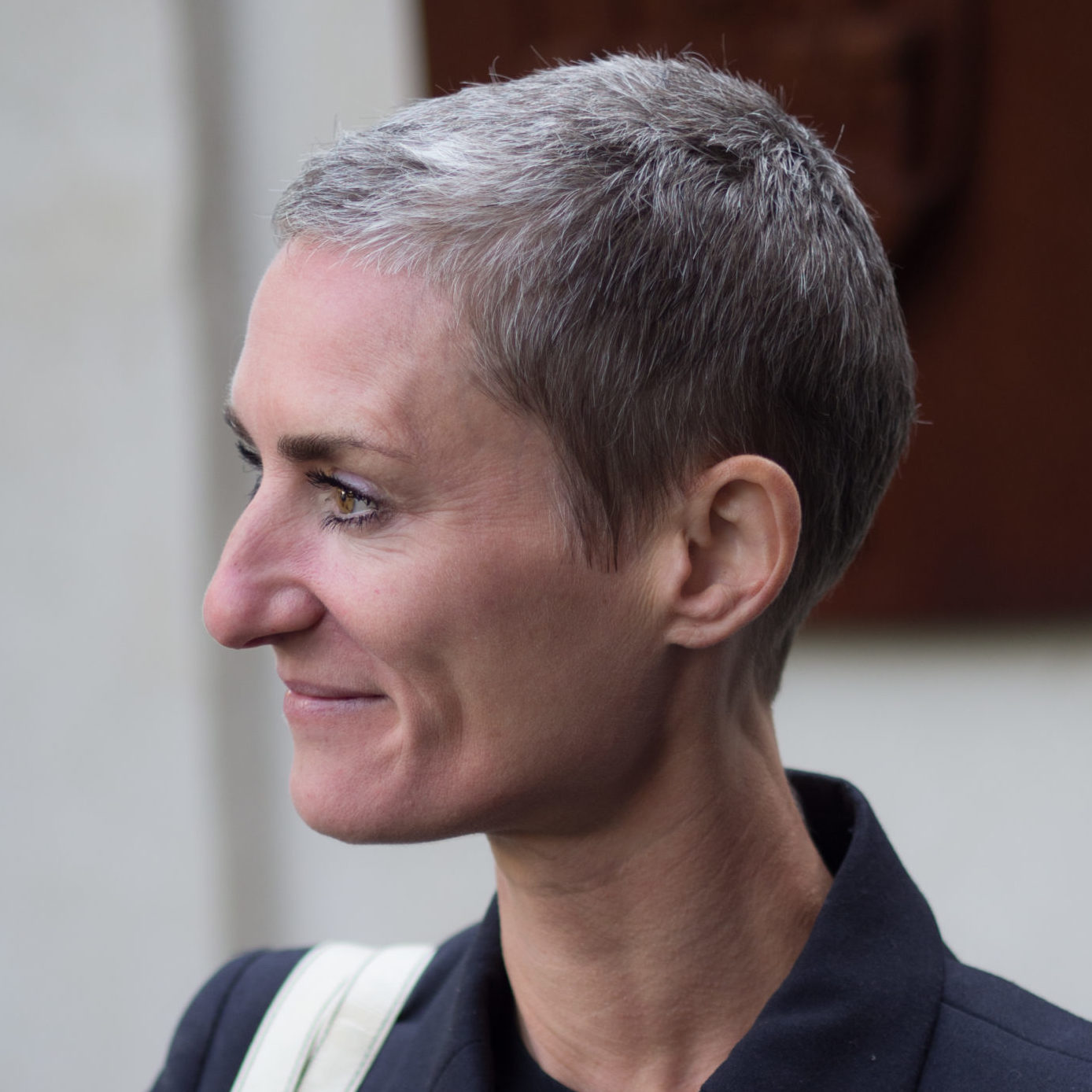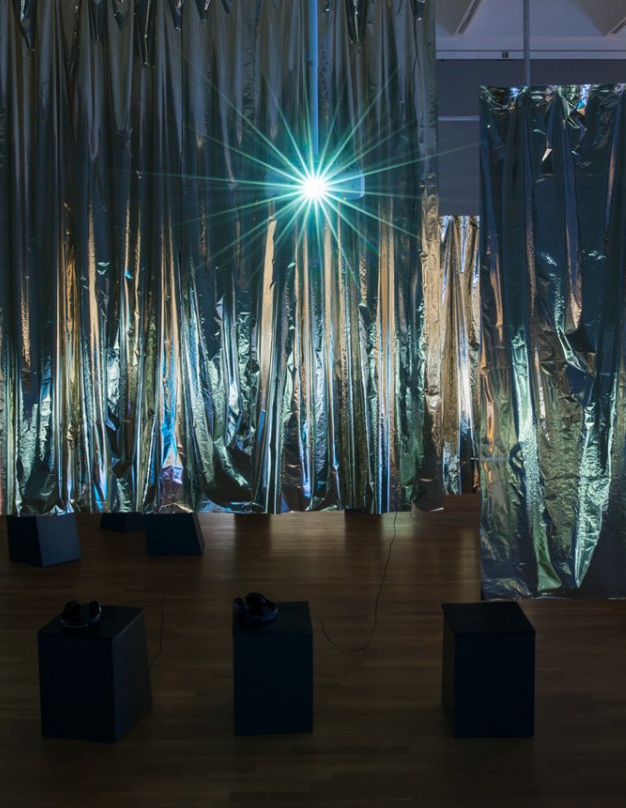Exhibitionviews VIDEONALE.14-18, Fotos VIDEONALE.14 Anneke Dunkhase; VIDEONALE.15-18 David Ertl, Exhibition archictecture: Ruth Lorenz
Revisited: Space as Method. Thoughts based on VIDEONALE.1 #essay
by Katrin Mundt, 2022
If one were to write the history of the Videonale as a biography, its development from an off-space into an art society and finally an art museum would suggest an exemplary career. Accordingly, looking back on its beginnings – the first Videonale in 1984 – one suspects it was marked by a euphoric mood, in line with the (relative) novelty of the artistic medium, whose achievements were to be showcased in a temporarily repurposed space in Bonn’s old town. Yet the introductory text to the catalogue describes the festival more like the symptom of a crisis, or rather an attempt to react at this crisis:
‘However important and innovative the ‘artists’ video’, as a fledgling discipline of the fine arts, may be, it is fraught with a serious problem, particularly in this day and age. What was celebrated just a few years ago as a fresh and therefore particularly apt form of artistic message communication has meanwhile been marginalised.’1
It was argued that the medium’s attempts, in the early days of its development, to demarcate itself from TV and commercial productions had obscured the view on an ‘analytical engagement with the given’.2 The first Videonale was therefore also conceived as an invitation for critical self-assessment to all those who operated artistically, curatorially or scientifically in the field. The form of the presentation was simultaneously the method. The exhibition consisted not of video installations or performances, but of screenings. The video works were pure ‘software’. It was hoped that this kind of equal treatment would ‘raise awareness of the medium’s art-specific characteristics’.3 Video was to publicly demonstrate its worth as ‘artistic message’. It seems to me that this explicit awareness of the need to clarify one’s own means and intentions, to come to an understanding about the contexts in which one operates and to find the appropriate spatial translations for these clarification processes is central not only to working with the shape-shifting medium of video, but also to the Videonale festival format.
After subsequent editions of the Videonale had experimented with selected installation-based video presentations, which were shown next to the screenings in order to ‘give the audience an insight into more expanded uses of contemporary video art’,4 Søren Grammel, the artistic director of the VIDEONALE.9, now at the Bonner Kunstverein, decided it was time to bid farewell to ‘the rigidly centralized and determined diachronicity of the screening’:5
‘there will be no screenings and lavish installations this year. instead, a space and presentation structure has been developed in which the works will be shown continuously and simultaneously throughout the day either on monitors or as projections. […] the viewing situations are minimal in design – neutral ‘shells’…’6
For this, an architecture made of adjoining textile cubes was developed, which aimed to counteract the hierarchisation of screenings and installations while at the same time leaving visitors ‘decide on the amount of time they wish to view the pieces, and the order in which to do it’.7 These considerations, which not only tried to do justice to the peculiar spatial and temporal expanse of video as an artistic medium but also acknowledged the role of a festival as a temporary, quasi-museum-like presentation context, anticipated the questions that accompanied the Videonale’s move to the premises of the Kunstmuseum Bonn in 2005. There began, under the direction of Georg Elben, a systematic examination and testing of changing technical and architectural environments for video in the exhibition space that continues to this day, albeit with a stronger curatorial impetus.
»In the meantime, video art has not only become mainstream-compatible, but also largely museumised.«
In the meantime, video art has not only become mainstream-compatible, but also largely museumised. The original tension between the fleetingness of ‘time-based arts’ and the white cube as a timeless, object-centred institution has largely disappeared, as have the boundaries between ‘film’ and ‘art’, which by force of habit and for ideological reasons are still occasionally upheld, although they play a marginal role at best in artistic and curatorial practice. And certainly since cinemas, festivals and art spaces have been compelled to present their programmes in similar streaming environments, as has been the case in the last couple of years, this distinction has been expanded to include further shades of grey. The Videonale relates to the museum like a distinct habitat. After the start of the festival, it exists as an exhibition within the exhibition. The art on display no longer disrupts the quietness and timelessness of the white cube, nor does the generic screening room compete with an architecture that emphatically understands itself as an original, but rather a different space-time temporarily moves into the museum, scenographically marked out as a guest performance with its own stage design.
These developments mean that the role of exhibition architecture is changing too. It is no longer just a neutral ‘shell’ but aims to be a statement in its own right, overwriting the space of the museum with its own sculptural postulates. Tasja Langenbach describes the architecture of the last, hybrid Videonale, for instance, as a reference system ‘with lines that make recourse to the Corona distancing requirements, thus providing orientation while simultaneously breaking up the space of the museum and offering new perspectives.’8 What might at first be seen as a slightly explicit analogy to the social vertigo we are now well familiar with simultaneously points to an unspoken question, namely, how and where video and other time-based arts will be experienced now and in the future, and what form of sociality can emerge from this experience.
It is not devoid of irony that the Videonale, through its online streaming portal set up in 2021, should have revived certain postulates of the historical first festival edition: a presentation of pure ‘software’ in a setting that was as ‘neutral’ as possible. Unlike in 1984, however, the organisers’ considerations did not solely revolve around successful ‘art message’, but also, to a large extent, around its recipients, whom they tried to involve – albeit virtually – as much as possible. In a way, the Covid-induced hybrid version of the festival was reminiscent of the latency phase that comes with the biannual rhythm of the Videonale, in which it literally has to prove its presence in absentia. More positively, it triggers a productive restlessness that gives rise to formats such as the Video evenings in the living room or the film programmes as part of VIDEONALE.scope. In these events too, earlier stages of the festival’s history seem to live on, such as, for instance, the intensive examination of the relationship between video art and television, or screening as the standard format of the first festival editions. Otherwise, the festival’s own history was rarely in the foreground,9 perhaps also sets out to stake a historical claim; rather, the festival reformulates its conceptual and formal reference points with each new edition, in dialogue with an artistic practice that is changing together with the social, technological and spatial contexts to which it refers.
While historically the Videonale began with the sense of a new departure that simultaneously marked a crisis, today, echoing the festival landscape as a whole, it is again faced with the question of the physical and medial positioning of both itself and its audience. Can and must a festival for time-based arts – still or especially now – be ‘different’ from the museum in which it temporarily emerges and disappears every two years, framed by its permanent collection? And (how) can this otherness be made to be productive? If we look for points of friction between media art and its spaces, we encounter them in those instances where the changes of the last two years have shifted expectations as regards the availability of art, or its premises and audiences. Where ‘reach’, ‘visibility’ and the promises of a deterritorialised festival experience ‘for all’ have obscured the fact that, to quote Cauleen Smith’s Covid Manifesto #5, the internet is a tool, not a habitat.10 They can also be found where the commodifying pull of the art world comes to bear on the works, yet largely excludes the artists from their financial exploitation, or grants them a symbolic share at best. And where festivals restrict public access due to premiering constraints and create an exclusivity from which they themselves benefit most.
»Another answer could be to use these encounters to communicate more intensively about the economic conditions of artistic and curatorial work and to develop more sustainable models of cooperation than those that have dominated the agenda up to now […]«
A possible reaction to these issues could be an emphatic commitment to time-based arts as also, significantly, space-related arts. And to the importance of festivals as places of physical and intellectual encounter – places that allow for a unique mobility and concentration of experience and are therefore essential for the exchange and survival of geographically widely ramified artistic scenes. Another answer could be to use these encounters to communicate more intensively about the economic conditions of artistic and curatorial work and to develop more sustainable models of cooperation than those that have dominated the agenda up to now (and which even a ‘Fair Festival Award’ will not change). Smaller (and therefore more flexible?) festivals in particular have already become active in this field. In the medium term, this also implies contributing to shape a support system for in-between arts – between film and fine arts, work and process, local structure and global networking – which acts in the interest of artists, independently of quasi-courtly commissioning structures and without regard to academic and bureaucratic demarcation needs. In this sense, the ‘analytical engagement with the given’ should be followed by actions that reach beyond the boundaries of festival periods and venues.
Katrin Mundt is a curator, author and since 2018 co-director of the European Media Art Festival (EMAF) in Osnabrück. She curated film programmes and exhibitions for the Videonale, Bonn, WKV Stuttgart, HMKV Dortmund, Museum Wiesbaden, Matadero, Madrid, Center for Contemporary Art Celje and CZKD, Belgrade, among others. She was a commission member of the Duisburg Film Week, the Short Film Festival Oberhausen and the Kassel Dokfest. Seminars, workshops and lectures at the Ruhr-Uni Bochum, the University of Düsseldorf, Goldsmiths, London, the KHM Cologne, the Kunsthochschule Braunschweig and the Merz Akademie, Stuttgart, among others. She writes regularly on film and media art, especially their points of contact with documentary and performative practices.

1 Georg F. Schwarzbauer, ‘Video als künstlerisches Medium. Versuch einer determinierenden Standortbestimmung seiner Produzenten’, in videonale 84 (Bonn: Videonale e.V., 1984), p. 8.
2 Schwarzbauer, p. 10.
3 Dieter Daniels / Bärbel Moser / Petra Unnützer: ‘Foreword’, ibid., p. 7.
4 Petra Unnützer, ‘Foreword’, in 4. Videonale in Bonn, (Bonn: Videonale e.V., 1990), p. 9.
5 Søren Grammel, ‘VIDEONALE.9’, in videonale9 (Bonn: Videonale e.V., 2001), p. 5.
6 Grammel, p. 5.
7 Ibid.
8 Tasja Langenbach, ‘Fluid States, Solid Matter’, in VIDEONALE.18. Fluid States, Solid Matter #1: Meta Facts (Bonn: VIDEONALE e.V., 2021), n.p.
9 Admittedly, the Videonale archive was researched and presented to the public in the framework of Videoarchive erzählen. Sammlungen stellen sich vor, but this was in the context of an exploration of different collection histories and their regional cross-connections. See http://www.videoarchive-erzaehlen.de/ [31.05.2022].
10 Cauleen Smith, ‘Covid Manifesto’, Millenium Film Journal, no. 71/72 (Spring/Fall 2020), p. 83.









